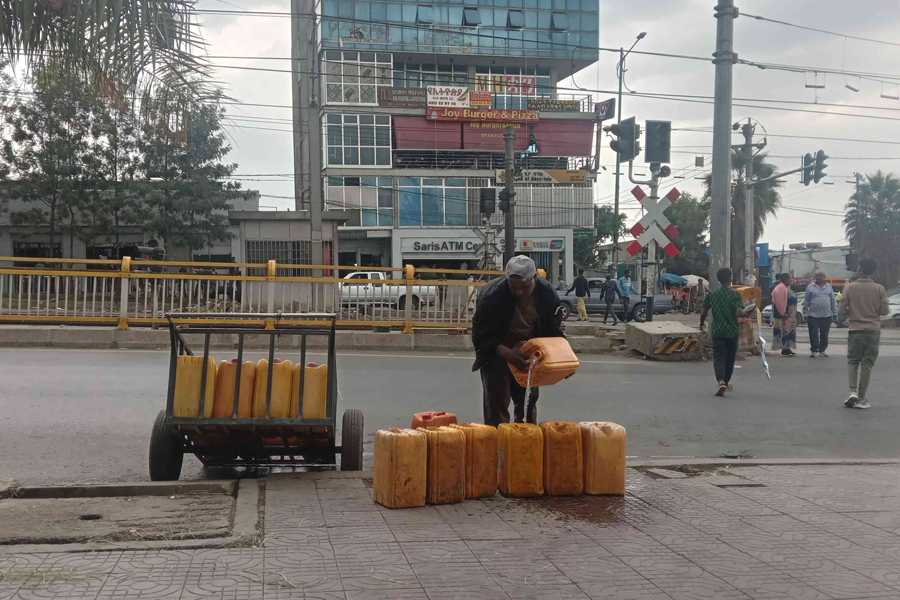
A man is pouring water on the evenly queued Jerry cans, in the streets of Adey Abeba, around Saris. The city's 5.2 million residents require a staggering 1.3 million cubic meters of water daily. However, supplies stand at around 800,000 cubic meters. This has young men race door-to-door, selling jerry cans for around 40 Br. While this fills immediate needs, it's just a quick fix to the city's deeper water crisis. Recent road development has resulted in water supply interruptions due to pipeline breakage and replacement. Unregulated urban expansion and migration have likely exacerbated the water crisis.
[ssba-buttons]